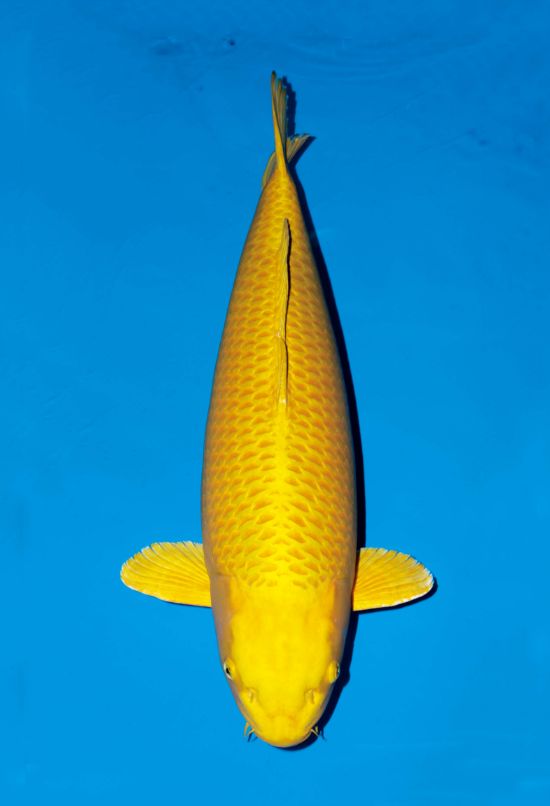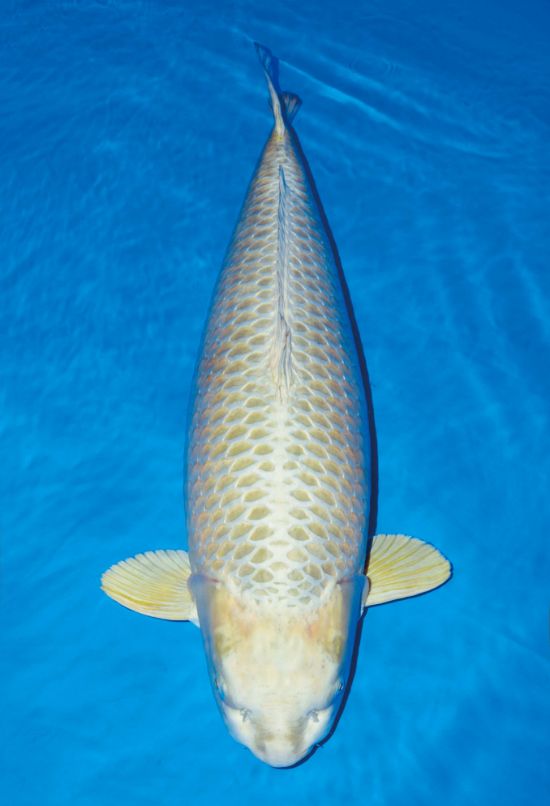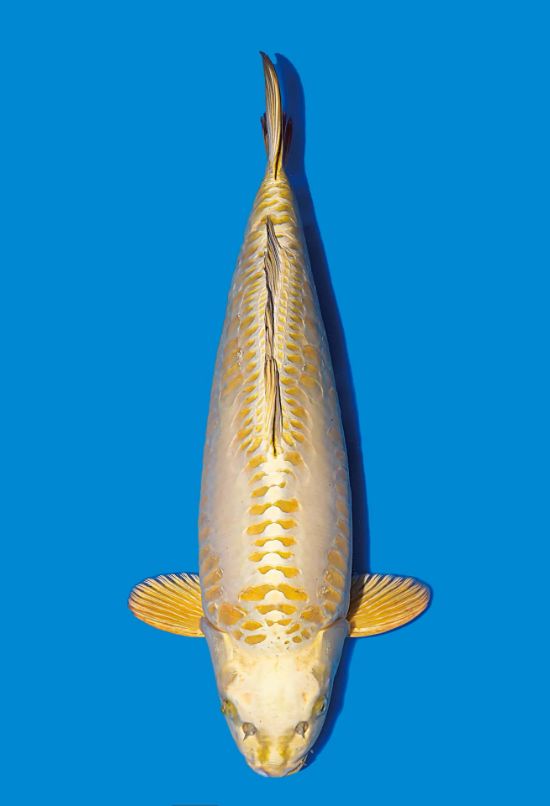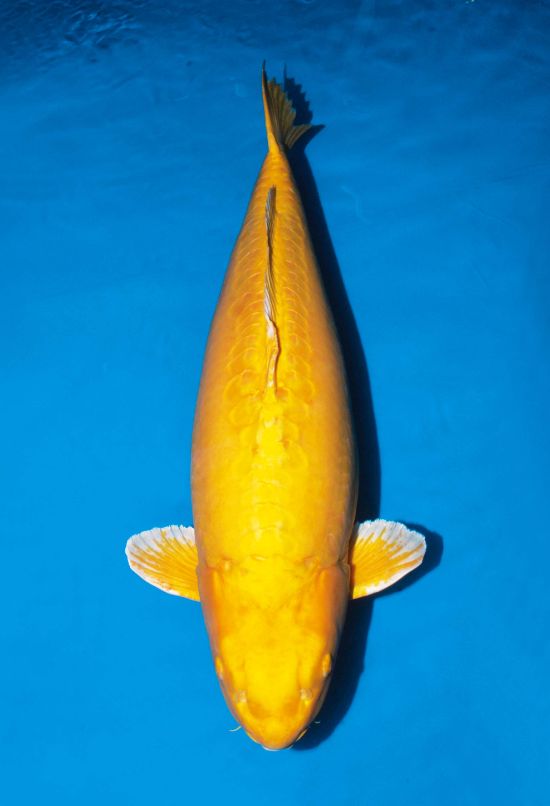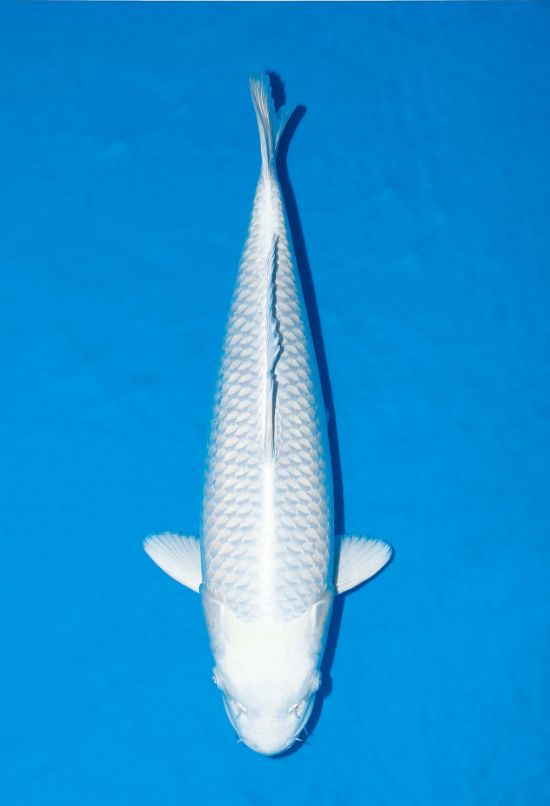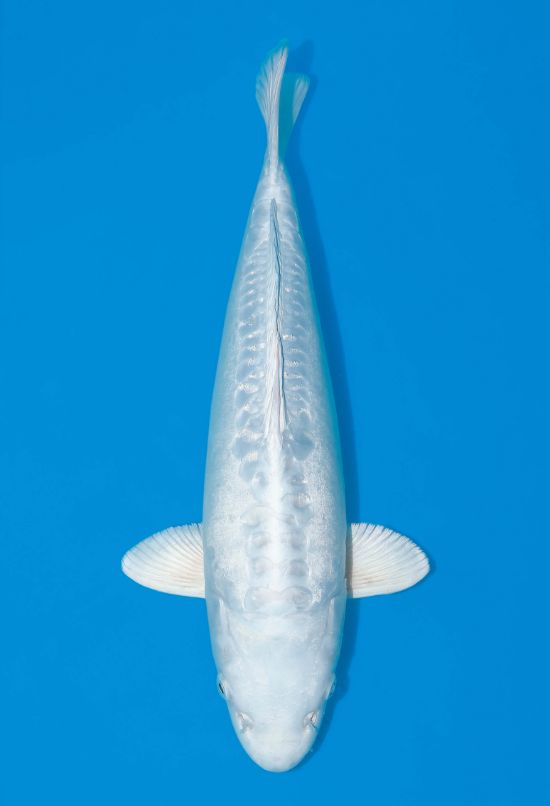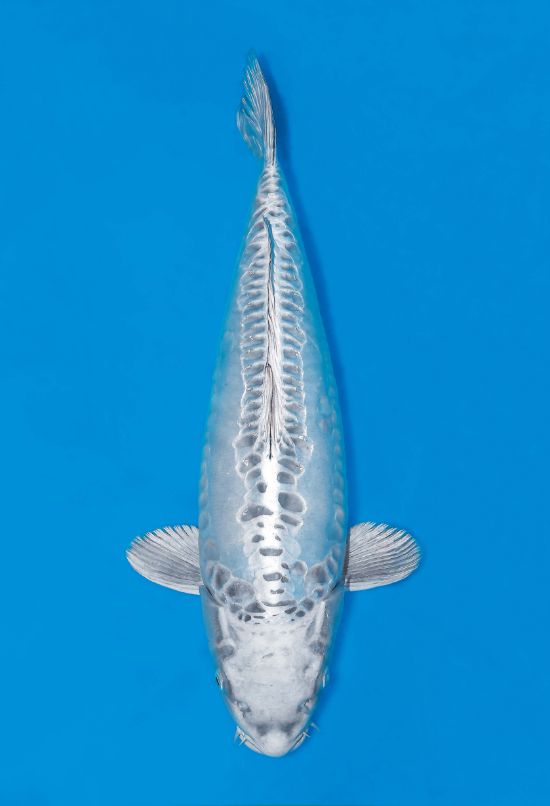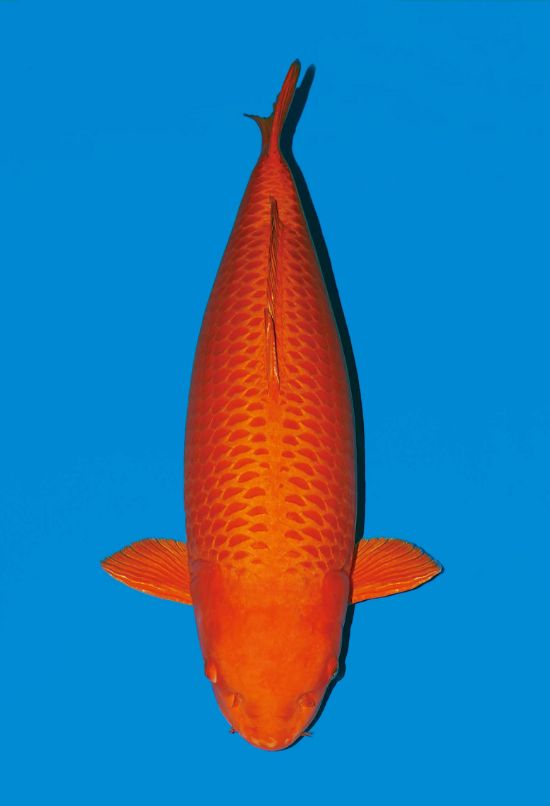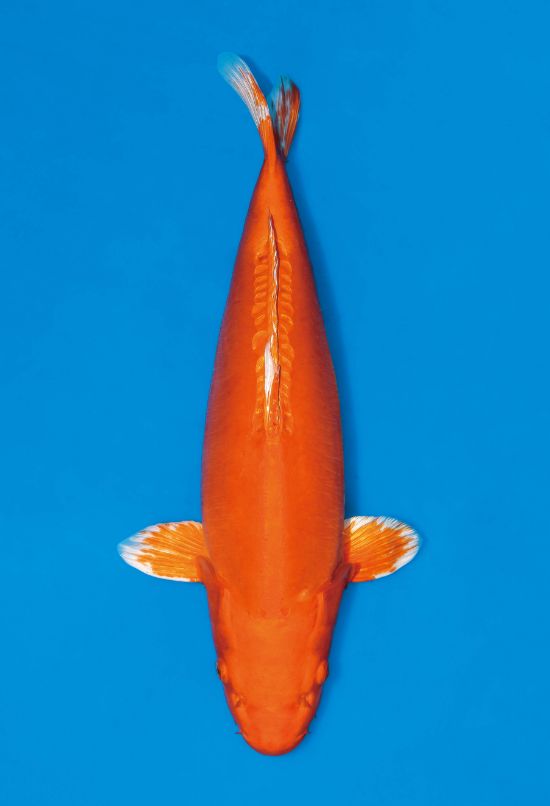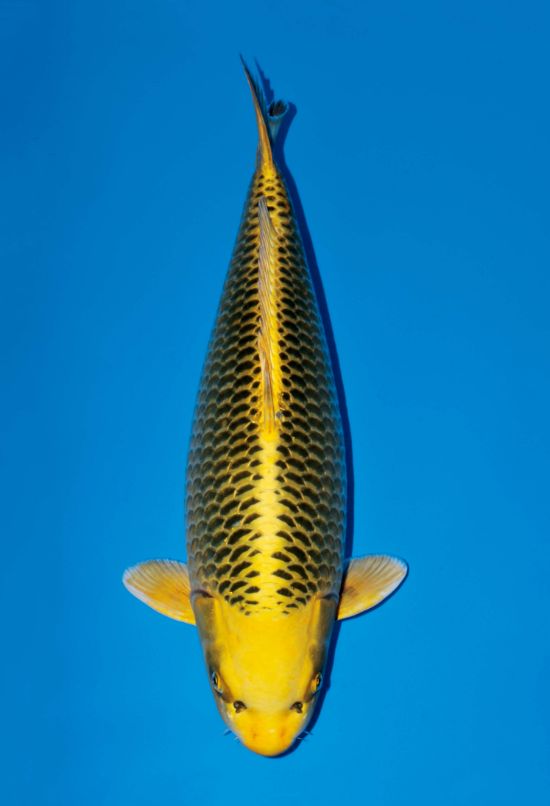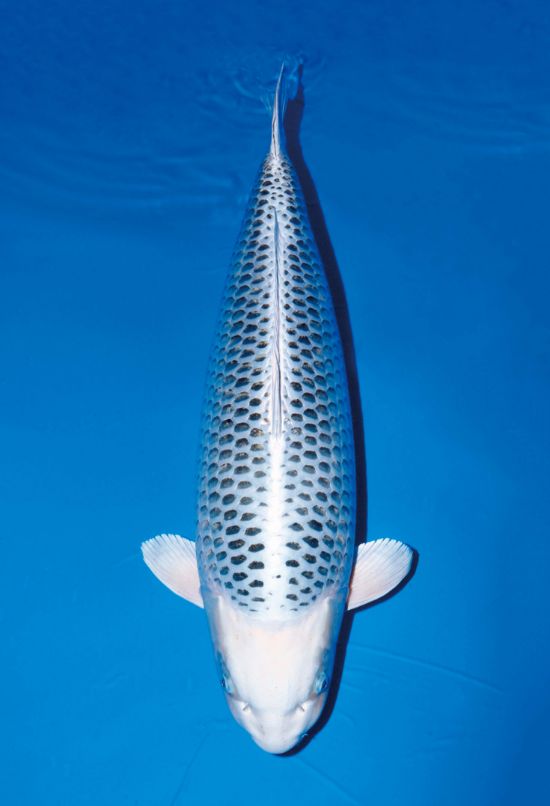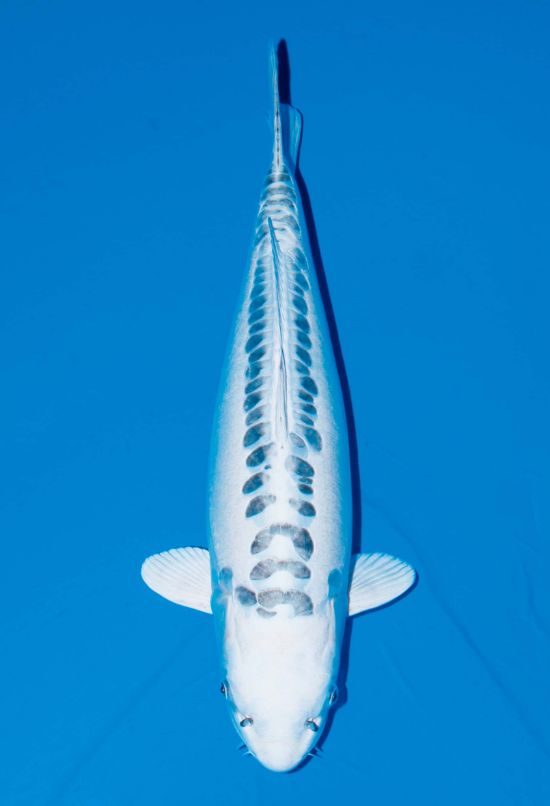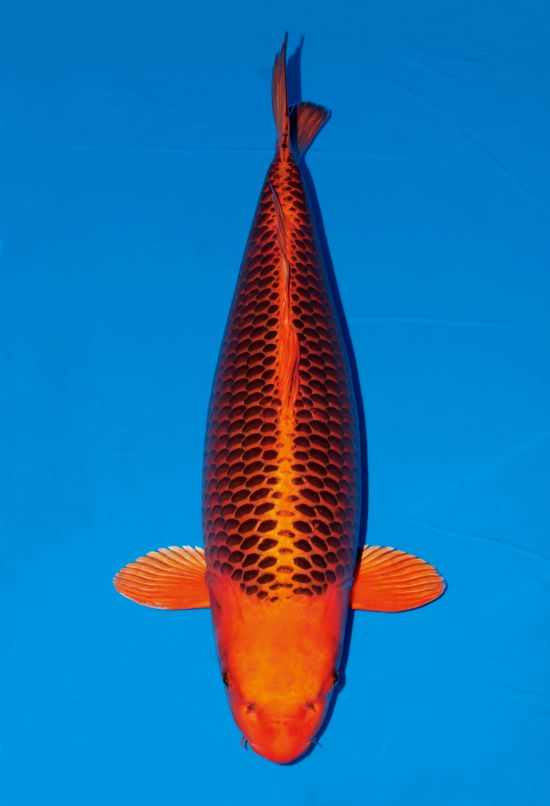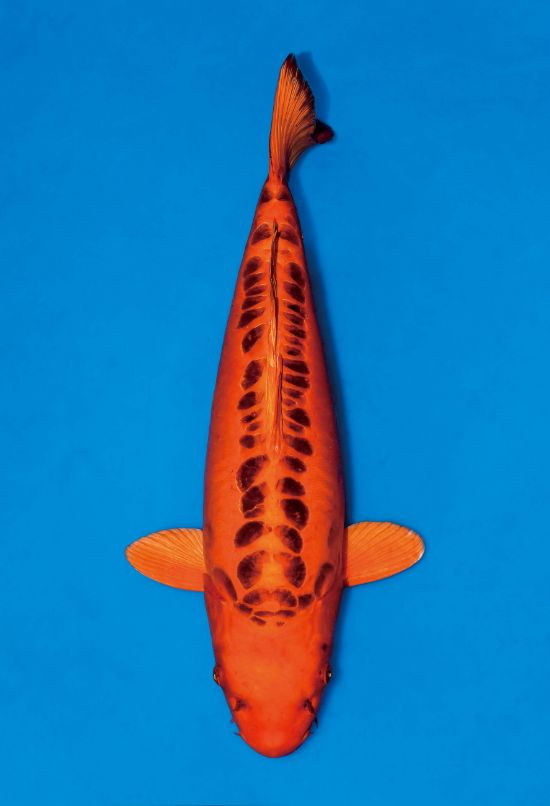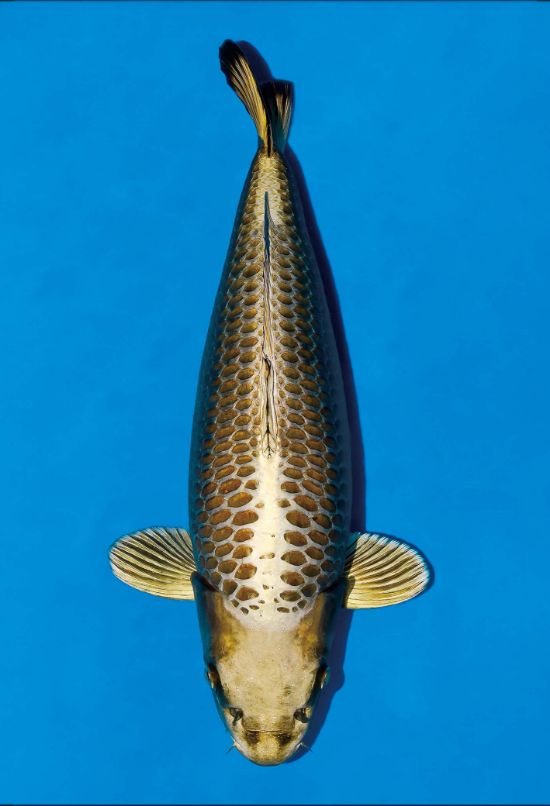Hikari-muji
Hikari-muji is a general name for Nishikigoi that have no patterns on their bodies, and their entire body is a single color with a metallic luster. Depending on the color of its body, it is classified into varieties such as Yamabuki-ogon, Platinum-ogon, Orange-ogon, Nezu-ogon and Mukashi-ogon, which have an austere luster. Nishikigoi with Matsuba-mon, a pattern in which each of the scales is colored black, are called Matsuba-kei, and those with Matsuba-mon and shining are called Kin-matsuba and Gin-matsuba.
As with Hikari-moyo and Hikari-utsuri, good Hikari-muji is considered to have a high luster and even, uniform color spread over the entire body.
- JAS No.2016 Hikari-muji
- Hikari-muji has no imprints and its whole body shines.
Mukashi-ogon
Mukashi-ogon has no imprints and its whole body shines in a turmeric color or dark gold. Part of scales, fins and head are black.
Doitsu-mukashi-ogon
Doitsu-mukashi-ogon has almost no scales on the whole body and the skin is exposed. It has the appearance characteristics of Mukashi-ogon.
Yamabuki-ogon
Yamabuki-ogon has no imprints and its whole body shines bright reddish yellow (Yamabuki-color called in Japan).
Doitsu-yamabuki-ogon
Doitsu-yamabuki-ogon has almost no scales on the whole body and the skin is exposed. It has the appearance characteristics of Yamabuki-ogon.
Platinum-ogon
Platinum-ogon has no imprints and its whole body shines white or light gray (Platinum-color called in Japan).
Doitsu-platinum-ogon
Doitsu-platinum-ogon has almost no scales on the whole body and the skin is exposed. It has the appearance characteristics of Platinum-ogon.
Nezu-ogon
Nezu-ogon has no imprints and its whole body shines silver-gray.
Doitsu-nezu-ogon
Doitsu-nezu-ogon has almost no scales on the whole body and the skin is exposed. It has the appearance characteristics of Nezu-ogon.
Orange-ogon
Orange-ogon has no imprints and its whole body shines reddish yellow (Orange-color called in Japan).
Doitsu-orange-ogon
Doitsu-orange-ogon has almost no scales on the whole body and the skin is exposed. It has the appearance characteristics of Orange-ogon.
Ki-matsuba-ogon
Ki-matsuba-ogon shines in turmeric or dark gold, and it has a "matsuba-mon" on the entire back. It is also called kin-matsuba in Japan.
Gin-matsuba
Gin-matsuba shines silvery white, and it has a "matsuba-mon" on the entire back.
Doitsu-gin-matsuba
Doitsu-gin-matsuba has almost no scales on the whole body and the skin is exposed. It has the appearance characteristics of Gin-matsuba.
Aka-matsuba-ogon
Aka-matsuba-ogon shines red or vermilion, and it has a "matsuba-mon" on the entire back.
Mizuho-ogon
Mizuho-ogon has almost no scales on the whole body and the skin shined orange is exposed. Part of scales shines black.
Kin-kabuto
Kin-kabuto has a shiny gold-brown body, and the left and right sides of the head have a gold-colored pattern resembling the horns of an elk.
Gin-kabuto
Gin-kabuto has a shining silver body, and the left and right sides of the head have a shining silver pattern like the shape of the horns of an elk.

